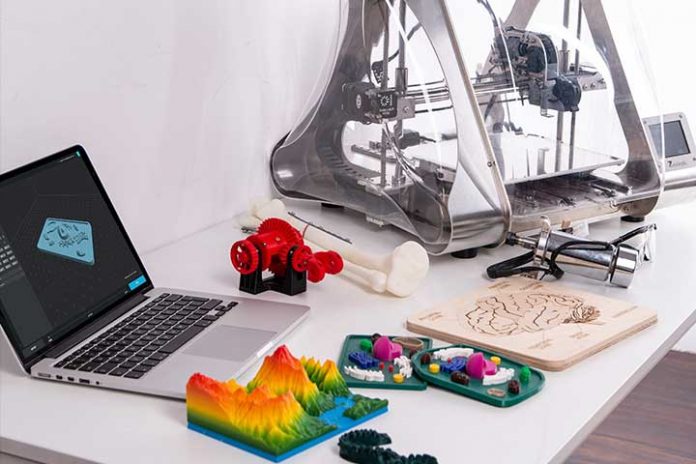3D printing is an innovative technology that manufactures a three-dimensional object through the superimposition of successive layers of a specific material. It is a process to create physical objects in three dimensions through a digital model. There are different methods of 3D printing, and one of the best known is injection printing.
3D printing advances
This technology is one of the main pillars of the Fourth Industrial Revolution. It is expected that significant advances will be made in 3D printing in the coming years, especially in the health sector. Researchers at Princeton University have manufactured a 3D ear capable of hearing frequencies that go beyond those currently heard by the human ear.
At the end of 2021, the first 3D printed house built in 12 hours was sold. The home is located in the state of Virginia (United States) and has an area of 110 square metres. It was built with concrete, a very resistant material. Now the European Space Agency wants to make a lunar station using this technology without the need to move materials from Earth.
For its part, MIT is working on a technique to create robots that can self-repair and self-replicate. Experts have developed the first 3D printing technique for robotics, which allows the printing of both liquid and solid materials simultaneously.
Livestock farming produces between 14.5% and 18.5% of global CO2 emissions. Many companies are working on 3D printing meat using vegetable proteins as a sustainable solution to feed the world’s population in the future.
One of the significant limitations today is the printing speed of the machines. However, MIT’s Manufacturing and Productivity Laboratory has recently created a printer that runs ten times faster than traditional models. The rate of 3D printing may increase up to 100 times in the future.
What are the advantages of 3D printing?
One of the main advantages offered by this technology for the industry is customization. Thanks to 3D printing, personalized products can be manufactured based on the needs and preferences of customers.
In addition, it allows the development of scale models to carry out a detailed risk analysis. This must be added to sustainability since, with 3D printing, products’ life cycle and environmental impact can be reduced. The processes of this technology use only the necessary material, unlike machining, which produces a large amount of waste.
Finally, it represents considerable cost savings in companies of all sizes and sectors of activity. While it’s true that the initial cost of purchasing a 3D printer can be high, the inexpensive materials and time savings provide a return on investment in record time. There are cases in which the amortization of the machine occurs in just two months.

